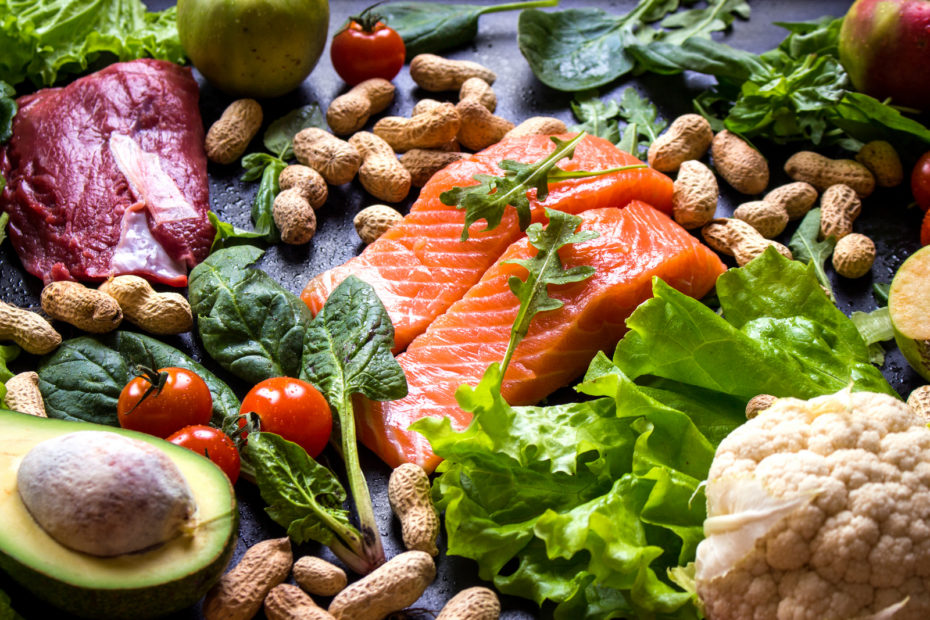What Are Nutrients?
“A nutrient is a substance used by an organism to survive, grow, and reproduce.” – Wikipedia
Nutrients are used to make energy, to build components in the body, and run these components. Different organisms require different sets of nutrients, called essential nutrients. Essential nutrients for humans include oxygen, water, proteins, fats, carbs, vitamins, and minerals. Not enough of an essential nutrient can cause symptoms of deficiency, and too much of certain nutrients can cause toxicity.
How Are They Used?
Nutrients are moved into cells and used in metabolism to make energy, and are also excreted from cells to make structures outside of the cell like hair. Some nutrients can be broken down for energy by the metabolism, like proteins, carbohydrates, and lipids. Often these same nutrients are used not just for energy, but to build cellular components as well, especially proteins.
Different organisms require different sets of nutrients – for instance humans can’t make Vitamin C so we need to get it from diet, whereas plants can make it themselves. When an organism can’t make a nutrient it needs, that nutrient is deemed essential. Non-essential nutrients can still be beneficial to eat, however. Humans, and all animals, require an energy source, amino acids, certain fatty acids, vitamins and minerals. [1]
Macronutrients vs. Micronutrients
Nutrients are commonly split into macronutrients and micronutrients.
Macronutrients are primarily used for generating energy and serving as the building blocks for the body. They include proteins, fats, and carbohydrates – as well as oxygen and water according to the definition above.
Micronutrients are used in smaller quantities to act as catalysts and “supporters” for processes all throughout the body. They include vitamins and minerals, vitamins being organic molecules, and minerals being single elements (single atoms) you can find on the periodic table. There are at least 14 essential vitamins, and at least 17 essential minerals.
Deficiencies and Toxicity
If you don’t take in enough of each nutrient, deficiencies develop over time that lead to a restriction of survival, growth, and reproduction. If you eat too much of a certain nutrient, you may develop toxicity or other negative health effects depending on the nutrient. The key is to get a balance of each nutrient, measured in recommended daily intake per day (RDI).
RDIs are estimated for the average person for each nutrient, but each person has different demands for each nutrient, sometimes by quite a lot, depending on their genetics and lifestyle. This is why keeping note of symptoms for deficiency or toxicity is important. Ultimately, by listening to your body, you can get an idea of what foods or supplements make you feel better, and which make you feel worse.
Nutritional science is constantly evolving as we grow our understanding of it. There are still many mysteries and misunderstandings, but presented in the table below is the basics of what we know so far.
Key Terms
- Metabolism: A very complex set of chemical reactions in the body that are necessary to keep living, including chemical reactions like making energy (ex: cellular respiration – breaking down food and oxygen into energy and CO2)
- Enzyme: A protein that makes a certain chemical reaction in the body happen faster by reducing the amount of energy required to cause a reaction. There are an estimated 75,000 enzymes used in the human body and they are divided into three categories: enzymes for digestion, enzymes for metabolism, and enzymes from food. Each enzyme is for a specific reaction, for example, enzymes used to break down fats are different than ones used to break down carbs. [2]
- Co-Factor: A molecule or ion that attaches to an enzyme in order to either turn the enzyme on, or to make it work faster. Many micronutrients are cofactors, or are used to make cofactors.
- Polar vs. Nonpolar molecules: Molecules that dissolve in water are called polar molecules, and those that don’t are non-polar. Non-polar molecules dissolve in fats. Vitamins A, D, E and K are non-polar, for instance, so if you take a supplement for one of these micronutrients, then you should also eat something with at least a few grams of fat with it otherwise the nutrients won’t dissolve as well and you won’t absorb them as efficiently. Also, fat soluble (non-polar/non-water soluble) vitamins are harder to excrete from the body, so they may accumulate to the point of toxicity whereas water soluble vitamins can be peed out.
- Bioavailability: There are often different forms of a nutrient, and some forms are more absorbable than others. For example, if you scroll down to Vitamin A, you will see there is a plant form (beta-carotene) and an animal form (retinol), but in order for the body to use the plant form, it must convert it into the animal form in the body first, which only converts at a 12:1 ratio typically, so 12 milligrams of vitamin A from plant food is only worth 1 milligram from animal foods because of a different bioavailability. Foods with a higher bioavailability of a nutrient are better sources of that nutrient.
Other notes:
- RDIs and other dosage recommendations are for adults if not otherwise stated
- 1 gram (g) = 1,000 milligrams (mg) = 1,000,000 micrograms (μg)

